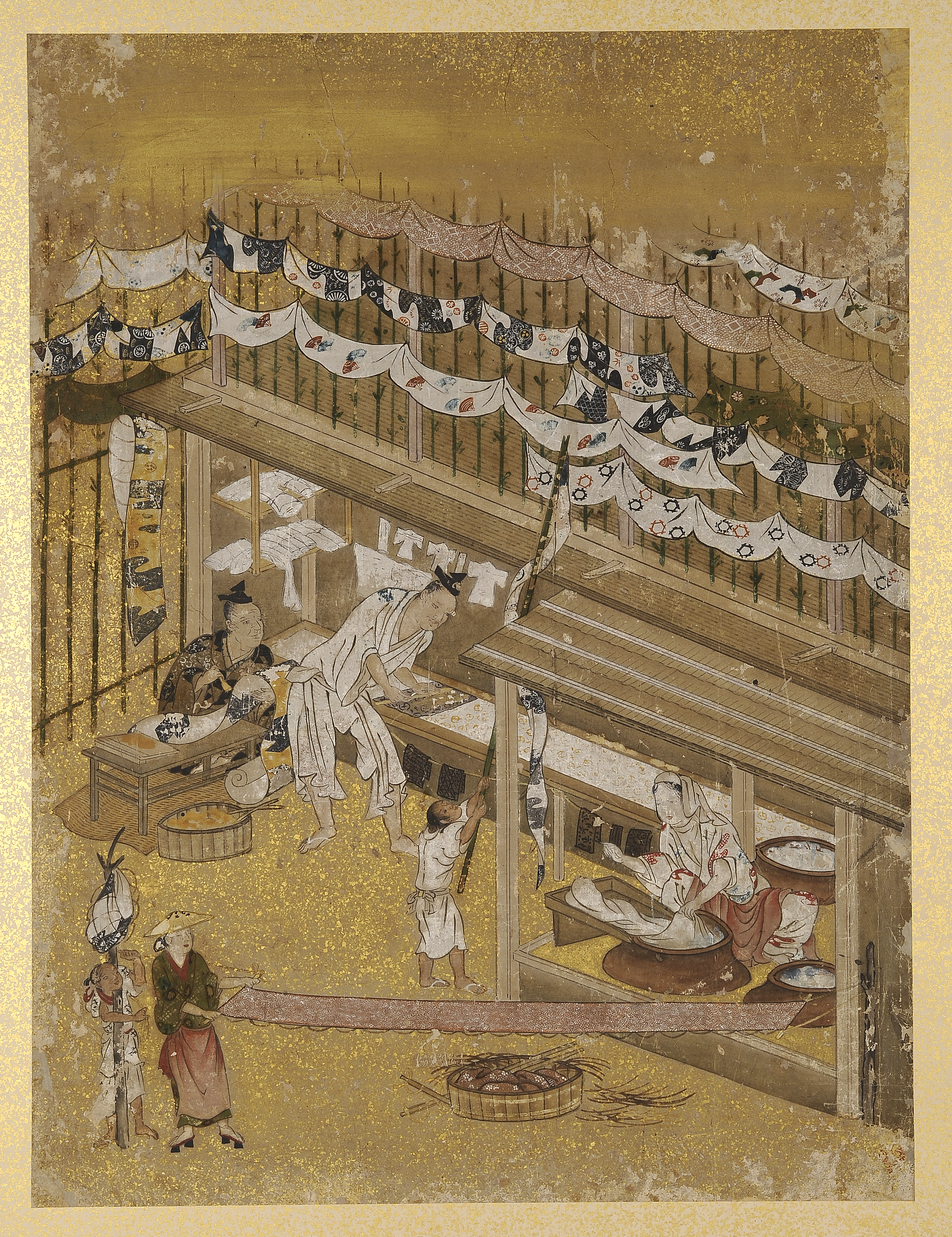Katagami
The Stencil Dyer’s Workshop
Pinch and drag to explore
In the early Edo period (1615–1868), the painter Kano Yoshinobu created a series of representations of Japanese craftsman at work in their shops. The detail seen here is the earliest extant representation of a dyer using katagami to produce resist-dyed textiles. Click through the interactive to learn more about the different processes taking place.
Painting, The Stencil Dyer’s Workshop, probably early 17th century
Detail from The Folding Screen of Various Artisans in Their Workshops
(Shokunin zukushi-e byōbu)
Kano Yoshinobu (Japanese, 1552–1640)
Brush and colored ink on paper, pasted on a folding screen
Kita-in Temple, Kawagoe, Saitama Prefecture, Japan
Image © Kawagoe City Museum (used with permission)
Using a wooden spatula and a paper stencil, an artisan applies rice-paste resist to a length of fabric. The resist will protect areas it covers from dye.
The same stencil will be used multiple times along the length of the fabric, creating a single, continuous design.
A second artisan uses a brush to touch up the fabric, applying resist or dye free-hand. Next to him on the table is a stack of mulberry paper, of the kind used for making stencils. Beside the table is a basket filled with rice-paste resist.
A female artisan dyes the fabric. When the resist has dried, the fabric is put to soak in a vat of indigo dye. Two such vats can be see here, one at right and the other behind the woman working. Once the fabric has had time to absorb the color, she rinses the textile in order to remove the resist paste and excess dye.
After the fabric has been dyed and rinsed, it is steamed to set the color: here, we see a textile suspended above hot wet stones.
An assistant uses a bamboo pole to hang dyed fabric from overhead racks. There, it will dry in the breeze.
The drying racks are filled with a variety of stencil-dyed lengths of fabric. The patterns reflect traditional Japanese motifs and styles, similar to those found on stencils in the Cooper Hewitt collection.
